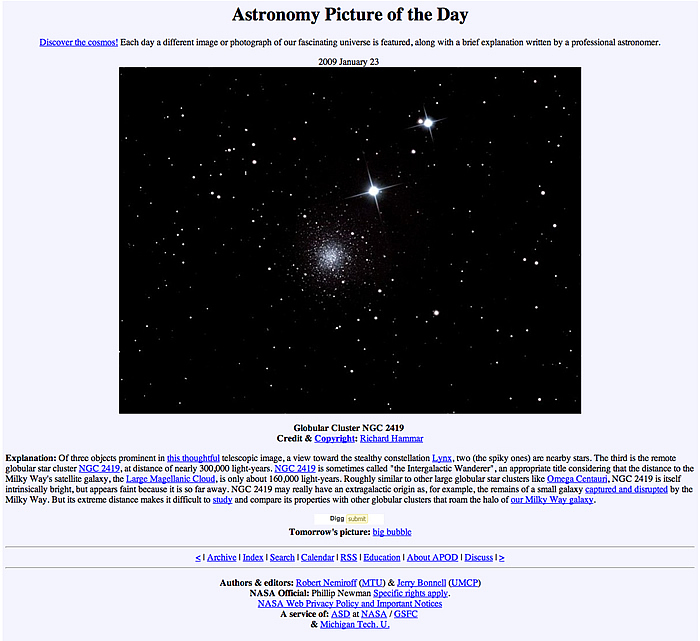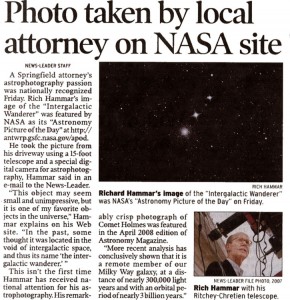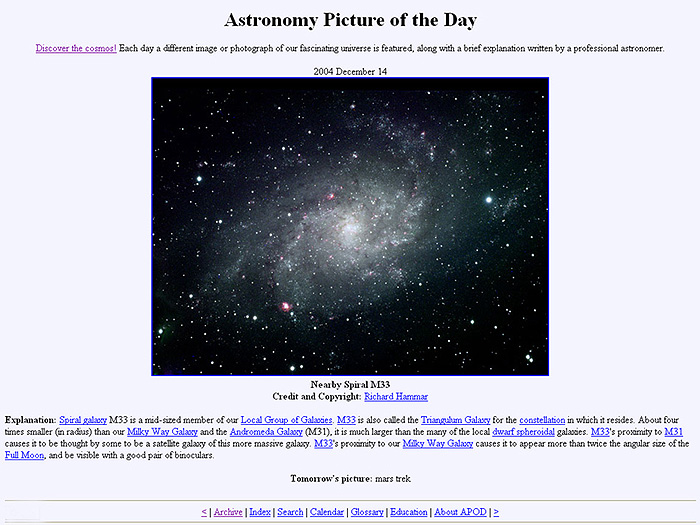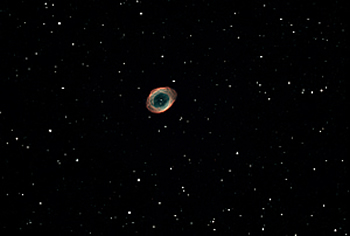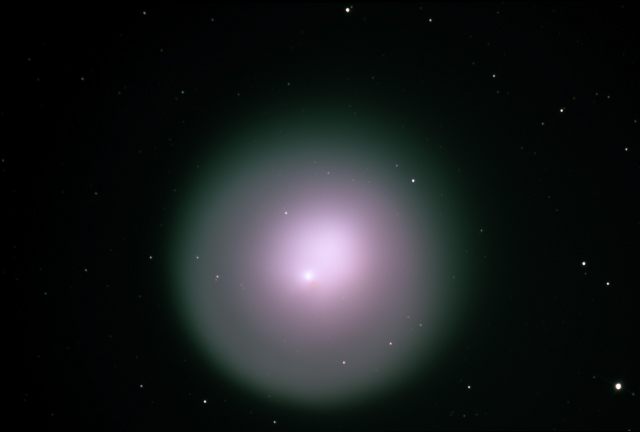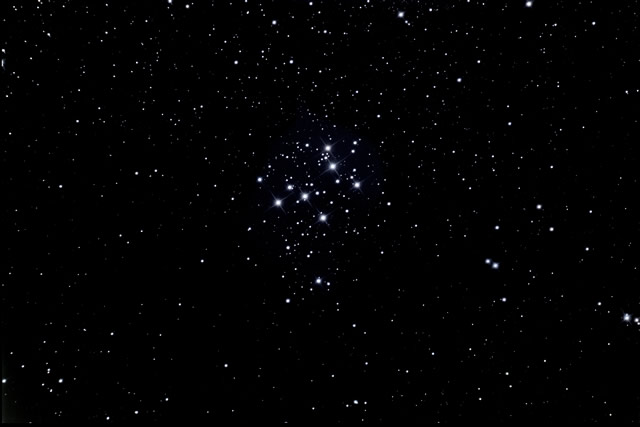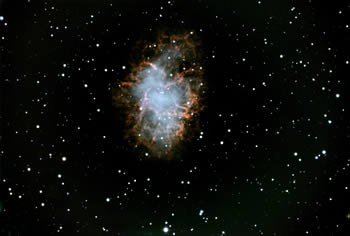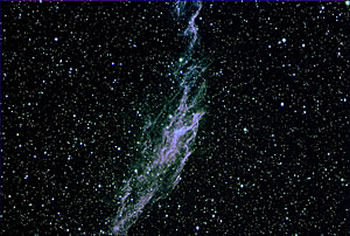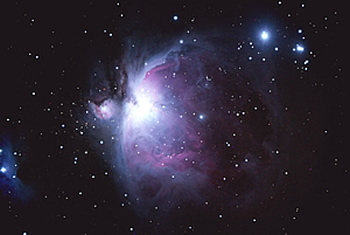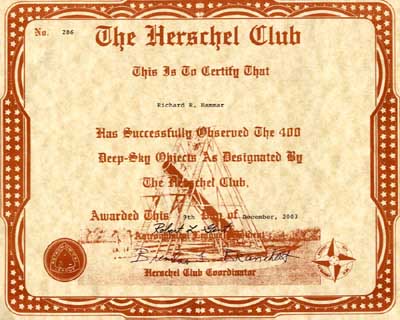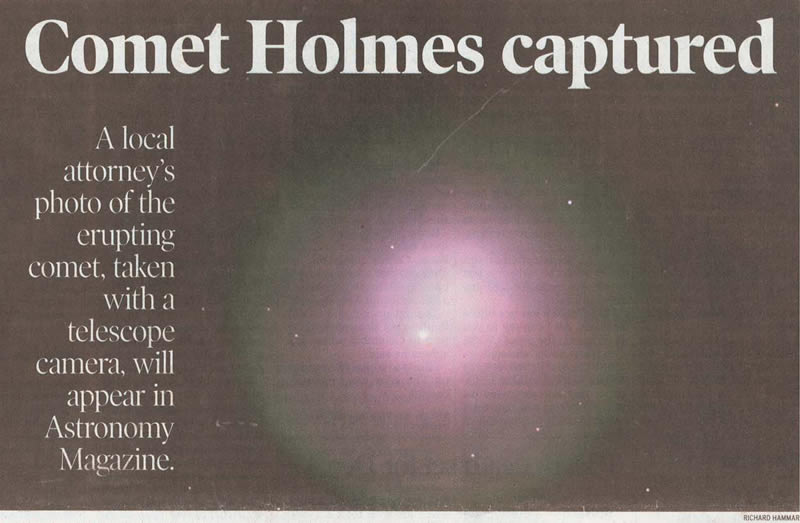Awards
Observing Awards
The Astronomical League is an international association of amateur astronomers. The League has developed several “award” programs that involve observing various categories of astronomical objects. Successful completion of a program entitles the observer to a special certificate and pin. The observer’s name is also entered on the list of awardees on the League’s website. I have earned the following three Astronomical League awards.

The Double Star Award
(CERTIFICATE #177)
To qualify for the Double Star Award, you are required to observe 100 selected objects, record your observations (including a drawing of each double or multiple star), and submit your log for verification to the League. The Double Star Gallery in this website includes images that I have taken of some of the double stars on this list. For more information about this award, visit http://www.astroleague.org/
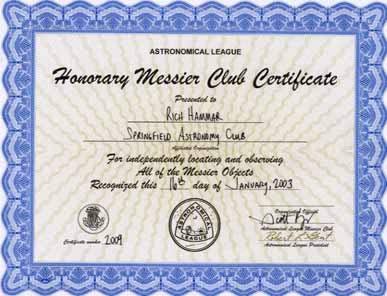
The Messier Award
(CERTIFICATE #2009)
The most popular program is the Messier Award. Charles Messier was a French astronomer who created a catalog of 110 astronomical objects as part of his search for new comets. Each object in the Messier Catalog is assigned a number, and astronomers often refer to these objects by their Messier number. For example, the great Andromeda Galaxy is known to amateur astronomers as M31 (Messier Catalog number 31). The famous Ring Nebula in Lyra is M57, and so on.
To earn this award, observers must (1) be a member of the League; (2) observe all 110 Messier objects and keep a record of their observations showing the date and time of each observation, seeing conditions, type and size of telescope being used, magnification, and a description of the object; (3) submit their observing records to the League for verification. Since the purpose of the Messier Club is to familiarize the observer with the nature and location of the objects in the sky, the use of an automated telescope which finds the objects without effort on the part of the observer is not permitted.
For more information about this award, visit http://www.astroleague.org/.
Imaging Awards
ASTRONOMY MAGAZINE PHOTO OF THE DAY
The Ring Nebula — March 21, 2007.
http://astronomy.com
ASTRONOMY MAGAZINE READERS GALLERY
Comet Holmes — October 2007
http://astronomy.com
Open Star Cluster M29 — March 2009
http://astronomy.com
THE HERSHEL 400 AWARD
(CERTIFICATE #286)
The Hershel 400 Award is another program offered by the Astronomical League that involves observing 400 specified objects in the New General Catalog (NGC). The NGC is a catalog of some 8,000 galaxies, star clusters, and nebulae, many of which are too faint to be seen in amateur telescopes. The award is named in honor of 18th century English astronomer William Hershel, who discovered nearly half of the NGC objects. The League’s website describes this award as follows, “This is meant to be an advanced project for amateurs who already have a fair degree of deep-sky experience. Anyone just starting out should go for the Messier Club first, this will provide the basic groundwork that this project is built on. To those who engage in or complete work on the Herschel Club you can be assured that you will know the sky and the instrument you are using; you will also know your own observing skill. Finally, you will have the curiosity and knowledge that are so important when studying the vast and beautiful universe that we live in.”
To earn this award, observers must (1) be a member of the League; (2) observe all 400 objects and keep a record of their observations showing the date and time of each observation, seeing conditions, type and size of telescope being used, magnification, and a description of the object; (3) submit their observing records to the League for verification. As with the Messier Award, the use of an automated telescope which finds the objects without effort on the part of the observer is not permitted.
For more information about this award, click here.
Richard Hammar’s image of Comet Holmes was featured on the front page of the local newspaper for Springfield, Missouri, on November 15, 2007. Download and read the full story.

